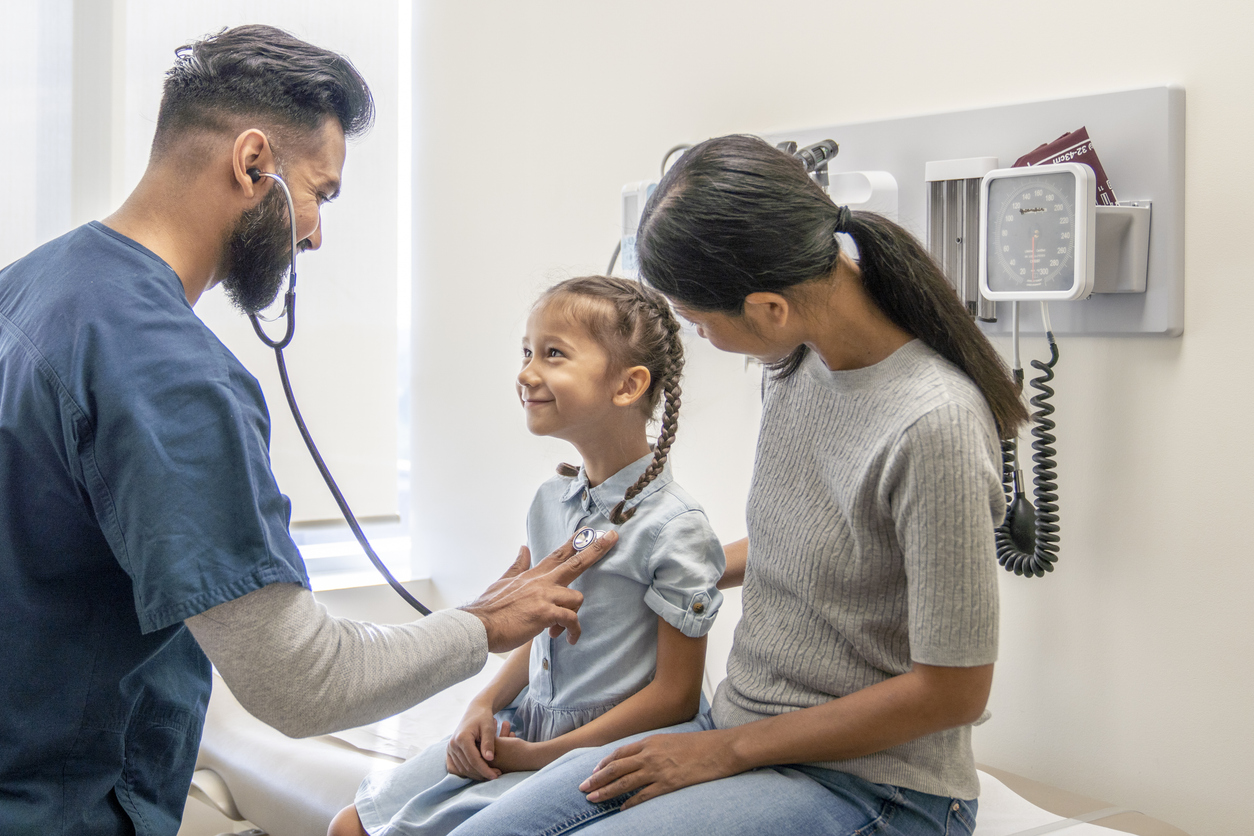Innovation in Nursing: 4 Current Trends
Written by:
University of Tulsa
• Jul 29, 2024

With a few taps on a tablet, a nurse reviews a patient’s past treatments, checks their current medication regimen, and compares their real-time blood pressure and heart rate data with previous records — all at the patient’s bedside. Instantly, the tablet highlights recent journal articles on the best practices for managing the patient’s condition.
Innovations in nursing like this have the potential to transform how nurses care for patients. Fully leveraging the latest advancements, however, takes know-how. Nurses can gain the needed knowledge and skills by pursuing the right nursing education.
Importance of Innovation in Nursing
Whether it’s integrating new ideas into nursing, such as holistic patient care approaches, or new technologies, such as diagnostic tools powered by artificial intelligence (AI), innovations can help nurses deliver better health care.
Today nurses can take advantage of a host of advancements designed to help them address the complex challenges of modern health care, from managing chronic diseases to delivering personalized care. This can be exciting for those considering the benefits of making a career change into nursing.
Innovations in nursing have become an indispensable part of providing high-quality, patient-centered care.
Consider why.
Improved Patient Care and Outcomes
The latest technologies and practices allow nurses to make more accurate diagnoses, administer treatments more effectively, and monitor patients more closely. Wearable health devices, for instance, can track a patient’s vital signs continuously, alerting nurses to potential issues before they become serious problems. This approach often leads to better health outcomes.
Such technologies also empower patients. When individuals have access to their own health information, they can better understand their conditions. This makes it more likely they’ll follow their treatment recommendations, ask questions, and, in general, play a more active role in their care.
Increased Efficiency and Lower Costs
Nursing innovations can increase efficiency and lower costs. From remote monitoring, which reduces unnecessary hospital visits, to electronic health records, which streamline documentation and minimize errors, innovative tools help nurses work smarter. This can save them time and frustration.
As an example, health care robotics can automate routine tasks, such as medication dispensing. Additionally, communication tools and privacy law-compliant messaging apps can help health care teams share information clearly and accurately, which limits misunderstandings and makes it easier to coordinate patient care.
Reduced Nurse Burnout
Innovative technologies are poised to help resolve some of the problems that lead to nurse burnout. Nurses often face tremendous pressure to complete many tasks in very little time. They also spend a significant portion of their shifts performing routine tasks, such as collecting supplies, managing medications, and documenting patient information.
Technologies like electronic medication management systems and automated supply carts, which track and dispense medical supplies efficiently, help streamline and automate such tasks. These innovations not only save nurses time, but they can also protect them from making mistakes.
Research published in the International Journal of Environmental Research and Public Health, for example, found that electronic medication management systems reduced medication omissions on patients’ discharge papers by approximately 45%.
When nurses have fewer responsibilities to juggle and less stress, they often experience greater job satisfaction and are at less risk of burnout.
4 Current Trends in Nursing Innovation
Advancements in technology are continuously reshaping the way nurses work. Here are four current nursing innovation trends making a splash in the profession:
Telehealth and Telemedicine
The COVID-19 pandemic catapulted telehealth to the forefront of health care during widespread lockdowns and social distancing measures. Today, remote health care delivery has become a fundamental part of patient care. While telemedicine has primarily focused on providing remote consultations between patients and health care providers, the quality and scope of telehealth are improving and broadening.
To start, telehealth platforms have leveled up their ability to support high-quality video and audio for consultations. Many have also included features such as screen sharing and digital whiteboards for better interaction.
Additionally, telehealth platforms can now connect to electronic health record (EHR) systems. This makes it significantly easier for health care providers to collect and manage their patients’ health information. During telehealth visits, health care providers can access patients’ records and make updates to their charts that are automatically transmitted into their EHRs.
By eliminating the need to manually input information into separate systems, nurses can save time and better avoid documentation errors. Any health information recorded by connected devices during a consultation, such as blood pressure monitors or glucose meters, can also be automatically synced with EHRs.
Telehealth and Integrations With Applications
Telehealth technologies are increasingly able to integrate with a variety of advanced applications. These applications make it possible for health care providers to use telehealth to support their patients’ preventive care and increase their involvement in their health care decisions.
To begin, such telehealth platforms can deliver personalized health recommendations to patients based on data from their remote monitoring devices. The applications can analyze health information such as blood pressure trends or activity levels and then provide insights about risk factors and early warning signs of potential health problems.
For instance, if a patient’s remote monitoring device detects consistently high blood pressure, the application can alert the patient and suggest dietary changes, more physical activity, or stress management techniques. Additionally, these platforms can direct patients to specific articles, videos, and interactive modules about disease management, treatment options, and lifestyle changes.
By offering access to educational materials, telehealth applications help patients better understand their conditions, learn how to manage their symptoms, and recognize warning signs of complications. This comprehensive approach ensures patients are well-informed and proactive in their health care.
Future telehealth platforms may also incorporate virtual reality components that allow nurses to educate patients about complex medical conditions and procedures in a more realistic and comprehensible manner.
Internet of Medical Things (IoMT)
The Internet of Medical Things (IoMT) is set to transform health care and stands as a burgeoning frontier in nursing innovation. This network of medical devices and applications can enable the management and analysis of large amounts of health data. From this analysis can come earlier disease detection, greater accuracy in diagnosis, and more personalized treatment plans.
IoMT devices continuously collect patients’ health data ranging from their blood glucose levels to whether they are taking their medications on time. This data is then transmitted in real-time to any number of applications that store, manage, and analyze the information.
For instance, one application may aggregate data from multiple devices into an EHR system, while an AI-powered application may analyze the health data to provide diagnostic support.
Devices in the IoMT include wearable and implantable devices as well as medical devices such as:
- Electrocardiogram (ECG) monitors
- Glucose monitors
- Pacemakers
- Insulin pumps
- Digital blood pressure monitors
- Smart thermometers
- Smart infusion pumps
- Imaging devices with connectivity features
Applications that work within the IoMT network include:
- Remote patient monitoring systems
- Telemedicine platforms
- Health tracking apps
- Emergency response systems
While the IoMT isn’t new, artificial intelligence and machine learning are revolutionizing it. The magnified capacities of these technologies to analyze and interpret huge amounts of health data can transform how nurses care for their patients.
Research has found that applying machine learning to IoMT data can do everything from improving the detection of leukemia to assessing fetal health more accurately.
For example, a recent study published in the Journal of King Saud University suggests that combining the IoMT with AI can make it possible to monitor fetal heart rates with greater accuracy. Abdominal ECG sensors transmit data to an AI application that accurately detects fetal heart rate patterns, enabling better remote prenatal care and early identification of potential issues.
Consider the following ways IoMT is changing the game for nurses:
Streamlined Workflows
IoMT devices such as smart thermometers, digital blood pressure monitors, and glucose monitors can automatically record and transmit patients’ data to their EHRs. This can reduce the time nurses spend on documentation.
Additionally, smart infusion pumps and other connected devices can track patients’ medication usage and inventory levels and then alert nurses when their supplies are low or when a device needs maintenance. This can help ensure the equipment nurses need is both well-maintained and available.
Improved Patient Monitoring
Wearable devices like ECG monitors and continuous glucose monitors provide real-time updates on patients’ conditions. This helps nurses provide immediate intervention when health emergencies arise and make personalized adjustments to treatment plans.
For example, nurses monitoring patients with heart disease can count on wearable ECG monitors to send real-time data to their nursing dashboards and alert them to any abnormal heart rhythms. Nurses can then intervene immediately, potentially preventing a heart attack.
For homebound patients or those living in remote locations, IoMT enables nurses to monitor their health metrics and respond to issues without the patient needing to visit the hospital. This is especially useful for managing chronic conditions.
Enhanced Communication
IoMT can integrate with telemedicine platforms and remote patient monitoring systems to allow nurses to access comprehensive data about their patients in one place. As a result, nurses don’t need to piece together data from multiple sources. This helps reduce the chance of errors.
Additionally, having comprehensive data readily available facilitates smoother communication with other health care providers. For example, if a specialist needs to review a patient’s history or current condition, the nurse can quickly share the relevant information, ensuring that everyone involved in the patient’s care is on the same page.
Simulation Technology in Nursing Education
Simulation technology in nursing education can give students realistic and immersive learning experiences, offering nursing students and educators unprecedented opportunities to apply theory to practice.
This nursing innovation provides a safe environment for students to make mistakes and learn from them without jeopardizing patients’ safety. With simulation technologies, nursing students can repeat procedures until they achieve proficiency. Additionally, simulation programs can be tailored to individual learning needs.
High-Fidelity Simulators
High-fidelity simulators are sophisticated manikins that can replicate a wide range of patient conditions and responses. These simulators can breathe, blink, speak, and simulate medical conditions such as heart attacks or respiratory distress. Nursing students can perform various procedures, from administering medications to practicing CPR, on these lifelike models. This hands-on experience helps nurses build confidence and competence in a way that traditional classroom learning cannot.
In the future, these manikins are set to become more lifelike and interactive. Not only will they look more like real patients anatomically, but they will also respond realistically with vital signs such as heart rate and blood pressure.
By improving their sensors and using wireless connections, these simulators could become even more realistic. Enhanced sensors could provide more accurate data about the manikin’s responses. Wireless connectivity could allow for remote control and monitoring, enabling instructors to adjust scenarios and give students immediate feedback.
Virtual Reality and Augmented Reality
Virtual reality (VR) and augmented reality (AR) technologies are increasingly being used to create immersive learning environments. VR can transport students to different clinical settings, such as an intensive care unit, where they can interact with virtual patients.
AR technology can superimpose digital content, such as images, text, or animations, onto the real-world environment that can be viewed through a device such as AR glasses.
For example, AR technology could enable nursing students to engage in a simulated emergency room scenario where a virtual emergency room is overlaid onto their surroundings through AR glasses. Within this simulated environment, students could encounter a patient experiencing cardiac arrest.
The AR system could provide real-time prompts and instructions for performing CPR, administering medications, and using medical equipment such as defibrillators. As students practice these tasks, the AR system responds dynamically, offering feedback on the student’s technique and decision-making.
AI-Powered Software and Tools in Nursing
Clinical decision support tools, machine learning algorithms, and natural language processing are prime examples of innovations in nursing that hold immense promise in transforming nursing, particularly in advanced nursing roles.
Nurses can use these tools to increase their diagnostic accuracy and provide treatments that are more effective and beneficial for their patients. AI-powered tools not only support nurses in making informed clinical decisions but also help nurses streamline complex tasks.
The adoption of these tools in nursing is in the early stages. Nonetheless, their potential to empower nurses in the delivery of more precise, timely, and personalized care is significant.
Nurses can get the most out of these advanced tools when they have an expanded scope of practice. With the authority to make more autonomous decisions and implement advanced care plans, nurses can make the most of these innovations when diagnosing patients, selecting treatments, and conducting follow-up care.
Clinical Decision Support Systems
Clinical decision support systems (CDSS) are tools designed to assist health care professionals, including nurses, in making clinical decisions. The AI-powered software analyzes patients’ data and pulls information from various other sources including medical literature and treatment guidelines to offer recommendations and support to health care providers.
These tools help nurses in several ways:
- Data Integration and Analysis: CDSS platforms aggregate and analyze patients’ data from EHRs and other sources, which helps present a comprehensive view of their health status. Nurses can quickly access relevant information about their patients, such as their lab results, vital signs, and medical history, in one place.
- Clinical Decision Support: The tools’ algorithms generate personalized recommendations and alerts based on the analyzed data. This helps nurses make informed decisions regarding diagnosis, treatment options, and care planning.
- Workflow Optimization: By automating routine tasks, such as documentation and data retrieval, these systems relieve nurses of some of their administrative burdens.
AI Predictions and Patient Care
AI algorithms analyze historical data, vital signs, and treatment responses to forecast how patients might fare. This information empowers nurses to tweak patients’ care plans proactively, keep a closer watch on high-risk patients, and step in before problems escalate.
For instance, tools such as Epic’s Deterioration Index (DI) use an algorithm that continuously evaluates multiple factors about patients including their demographics and lab results. The DI alerts nurses to subtle shifts in patients’ conditions. By spotting these changes early, nurses can intervene promptly, potentially avoiding more serious health issues.
When faced with multiple patients, nurses can refer to DI scores to decide which individuals require immediate attention. This approach helps nurses plan their rounds and helps ensure nurses can allocate their time and resources where they are most needed.
AI-Powered Medical Scribes
Nurses spend a good deal of time on administrative tasks and documentation. AI-powered clinical scribes stand to change that. These digital tools use advanced voice recognition technology to listen to conversations between health care providers and patients. As conversations occur, AI scribes capture and transcribe dialogues into EHR systems.
This automation streamlines the documentation process, freeing up nurses’ time for more direct patient care.
Lead the Charge in Nursing Innovation
Innovation in nursing extends beyond adopting new technologies; it’s about transforming the way nurses deliver care. Nurses have a unique opportunity to lead the charge in innovative health care. By staying informed about the latest trends and advancements, pursuing ongoing education, and advocating for the integration of new tools and practices into their workplaces, nurses can ensure they are at the forefront of this exciting evolution in health care.
Explore The University of Tulsa’s nursing programs and how they empower individuals to lead the charge in nursing innovation.
Recommended Readings
Hospice Nurse: Job Description and Salary
The Benefits of Earning a Nursing Certificate for APRNs
What Is the Nursing Process? A Guide for Effective Patient Care
Sources:
American Hospital Association, “Collaborative Robot Aims to Ease Stress on Nurses”
American Medical Association, “AI Scribe Saves Doctors an Hour at the Keyboard Every Day”
American Nurses Association, “How Technology Is Changing the Nursing Industry”
Forbes, “AI and Telehealth: Rewards Come With Patient Privacy Risks”
Forbes, “The 10 Biggest Trends Revolutionizing Healthcare in 2024”
Health Resources and Services Administration, Telehealth and Remote Patient Monitoring
JMIR Research Protocols, “Robotics in Nursing: Protocol for a Scoping Review”
_Nature Communications, “_From Lab to Life: How Wearable Devices Can Improve Health Equity”
StatPearls, “The How When Why of High Fidelity Simulation”
Techopedia, “AI in Healthcare: Top 5 Medical AI Tools We Use in 2024”


